
The Resourceful Sailor — Behind the Curtain
Is your boat’s companionway a high-traffic area because you live aboard or have a family? Do you find removing and replacing drop boards tedious? Once removed, are those drop boards inconvenient to stow but still convenient to replace? (What?) Or do they slide around on slippery gelcoat or settees, marring themselves and the boat around them? Maybe you have condensation or fresh-air issues, or want privacy. Or do you want to keep a light rain or bright sun on the outside but still have quick access in and out? Those were driving forces behind The Resourceful Sailor’s making and installing a companionway curtain, not just on Sampaguita, a 1985 Pacific Seacraft Flicka 20, but also on his previous boat, a 1966 Columbia 26.
A quick, simple, inexpensive, and non-destructive solution was to cut a piece of marine fabric in the shape of the companionway, but oversized. I hemmed the edges and added a drawstring on the top like on a cinch sack or hoodie. I chain-spliced fast eye boat snaps on each end of the drawstring that I could loop around the cabin-top handrails and, voilà, I had a companionway curtain.
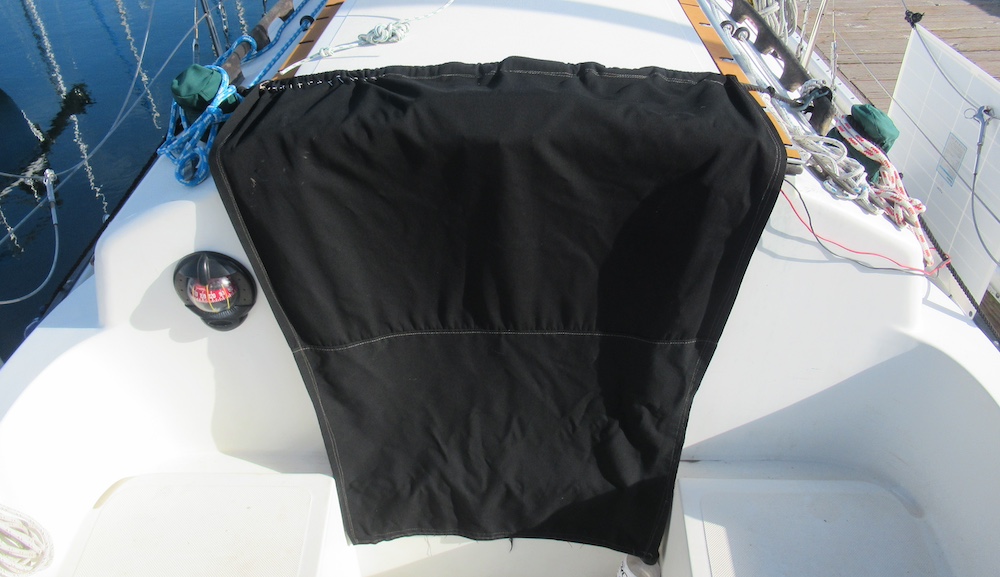
In my 14 years of living aboard, I have made three renditions. In my case, I used still-viable hand-me-down fabric from dockmates who had replaced the canvas on their bigger boats. I had access to a regular sewing machine (which handled the fabric fine) or hand-stitched the curtain. The black nylon three-strand drawstring and marine thrift snaps were reusable. I don’t know of an off-the-shelf solution, but I’m sure a canvas maker could make quick work of it.
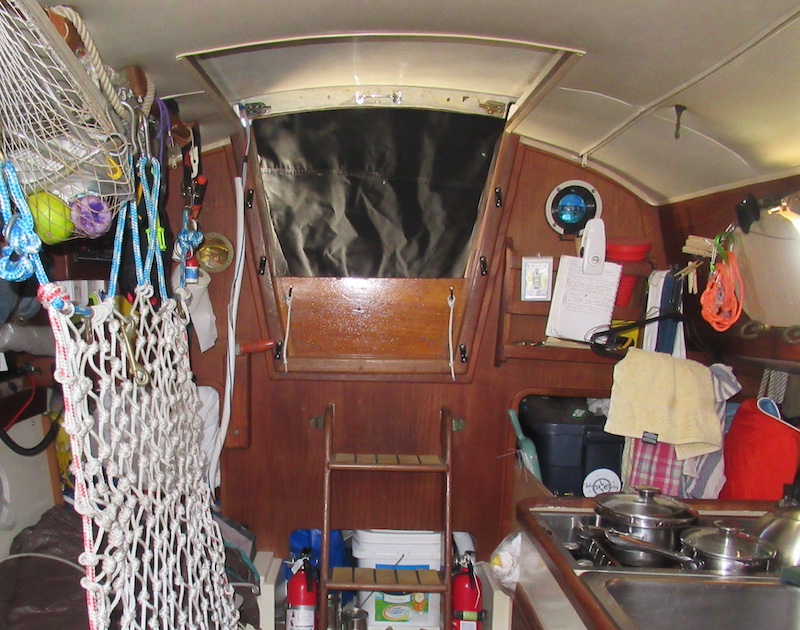
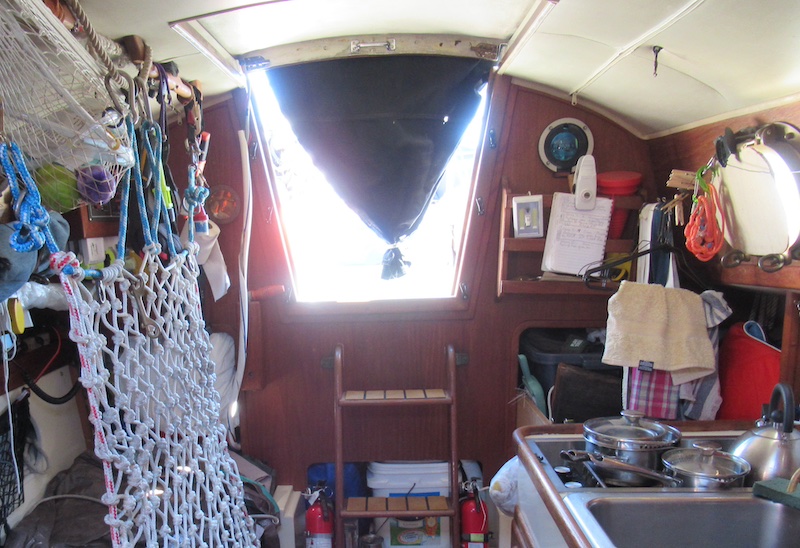
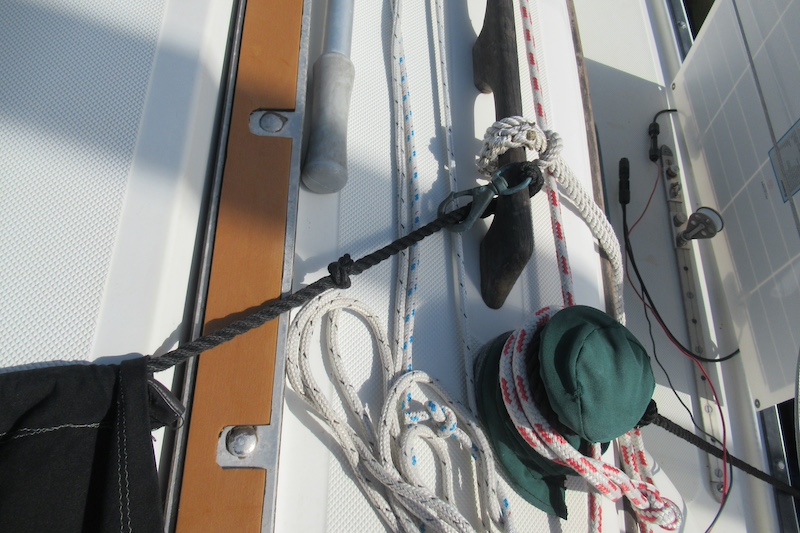
I prefer the curtain to a drop-board hatch cover, sometimes seen on boats. While not beyond my DIY capabilities, I didn’t want to screw boat snaps into my cabin top or buy a boat-snap tool. I didn’t want to hear the “clicky and scratchy” sounds of loose snaps while down below and unable to fasten them easily and quickly. Plus, the designs I’ve seen were geared more toward aesthetics and varnish protection than an easy-access and functional curtain.
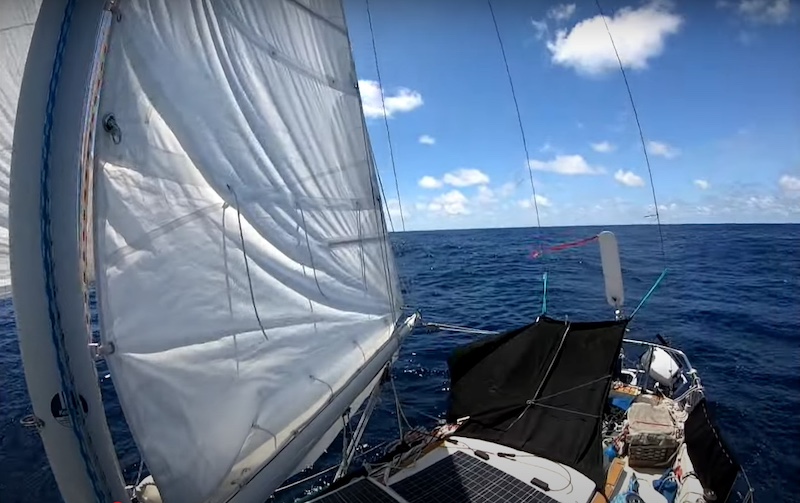
Security could be an issue, but it hasn’t been a big concern or problem for me, even when I lived in a Seattle marina. The drop boards can still be used, and the hatch locked if necessary or desired. From off the boat with the curtain down, you couldn’t tell if the owners were in or not. I’m under no illusion that if someone wants into a boat, they can get into most. If locked, through destructive means.
Within a few days of living on a boat, I knew I wanted easier access. I would put the drop boards in, be just about to step off, and, “Oh, crap,” I had forgotten something. Do that a few times, and tedium sets in. (Life is short.) If there’s a breeze or rain from astern, install the bottom board or two to keep the curtain bottom from blowing inside the companionway, but still have some air circulation. It is also incredibly easy to remove and stow if unwanted or unneeded.
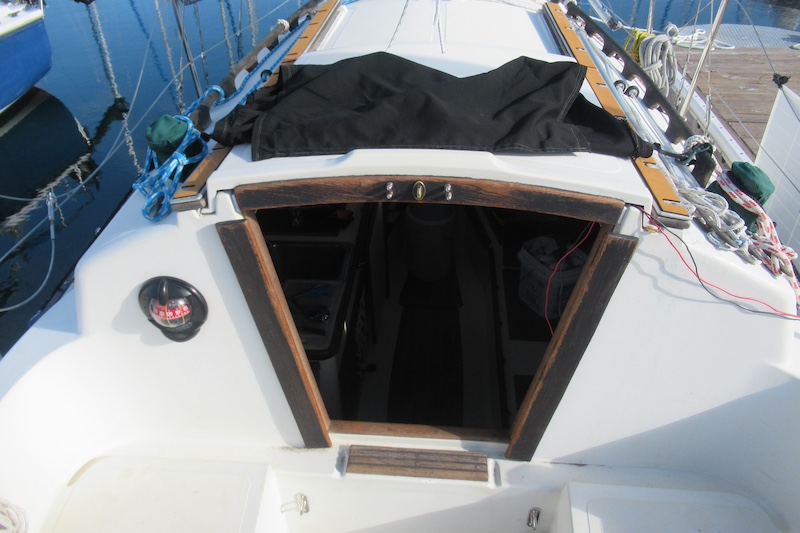
Of course, each boat requires a thoughtful custom design. The Resourceful Sailor wouldn’t want to take all the fun out of “messing about in boats.” Remember, keep your solutions prudent and safe, and have a blast.
*We used a curtain in our companionway while living aboard in Maine. Even the one-piece drop board we had was a pain to insert and remove on a regular basis, but it was too cold to leave the companionway open. So we made a curtain and used Velcro to attach it. The Resourceful Sailor’s fastening sounds like a better idea. What have you used to secure or add convenience to your companionway access? – Ed.
